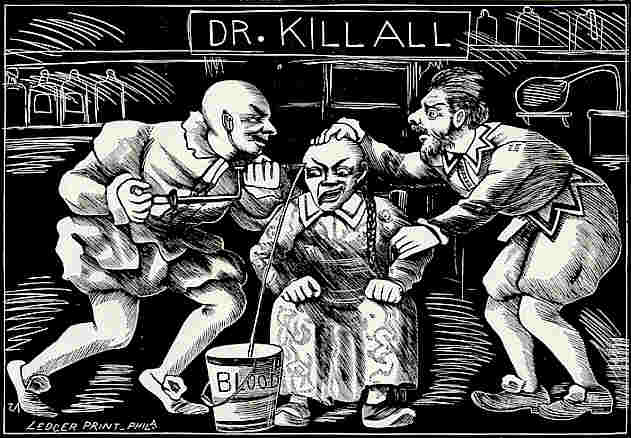|
|
ASYLUM The diagnosed schizophrenic Artaud is one of the most famous French writers of the 20th century and so a rather obvious choice for this section. "Le Pèse-nerfs" was published in 1925. The beautiful and sometimes sickening drawings of the quiet, lonely Henry Darger have become rather fashionable recently, but until his 15.000-page epic "The Story of the Vivian Girls, in What is Known as the Realms of the Unreal, of the Glandeco-Angelinnian War Storm, as caused by the Child Slave Rebellion" goes online, we will probably still have to wait for some time. Until then, you can at least have a look at his pictures, e. g. "At Journall They Escape". If you prefer your Canon Law with massive doses of raving paranoia, this book is for you. Mannix lives in Sydney and has written a book, in which he describes his psychotic experiences with a strange poetic force. Some of his sentences like "Then little black moons like trapdoors crept open & these eyes started to growl and stare violently at my feet" are definitely memorable. (The pages of his book were scanned as pictures and may therefore take some time to load. Often, they also seem to be down.) Schreber became Senatspräsident at the Oberlandesgericht Dresden in 1893. Soon after, he was hospitalized. In his "Denkwürdigkeiten" he describes in an extremely clear and lucid style the shattered world he has inhabited since then and his own frantic attempts to reassemble the fragments. Moving and interesting. Freud wrote a rather prejudiced study of the book. I have omitted the addenda and footnotes, so this text is not a complete edition. (I)
Like D. P. Schreber, Adolf Wölfli was interned at Sonnenstein
Sanatorium. Like H. Darger, he is principally known for his ferociously
inventive artwork, although he wrote a lot more than he painted. His magnum
opus "Von der Wiege bis zum Graab" is a vast fictional
autobiography, in which he and his family explore and conquer the earth, the planets,
and finally the whole universe. The book ends with "Sankt Adolf"´s
deification. These short sound excerpts show at least Wölfli´s implosive
imagination and strong sense of rhythm. - No responsibility taken
for the contents of external links! - |
|

